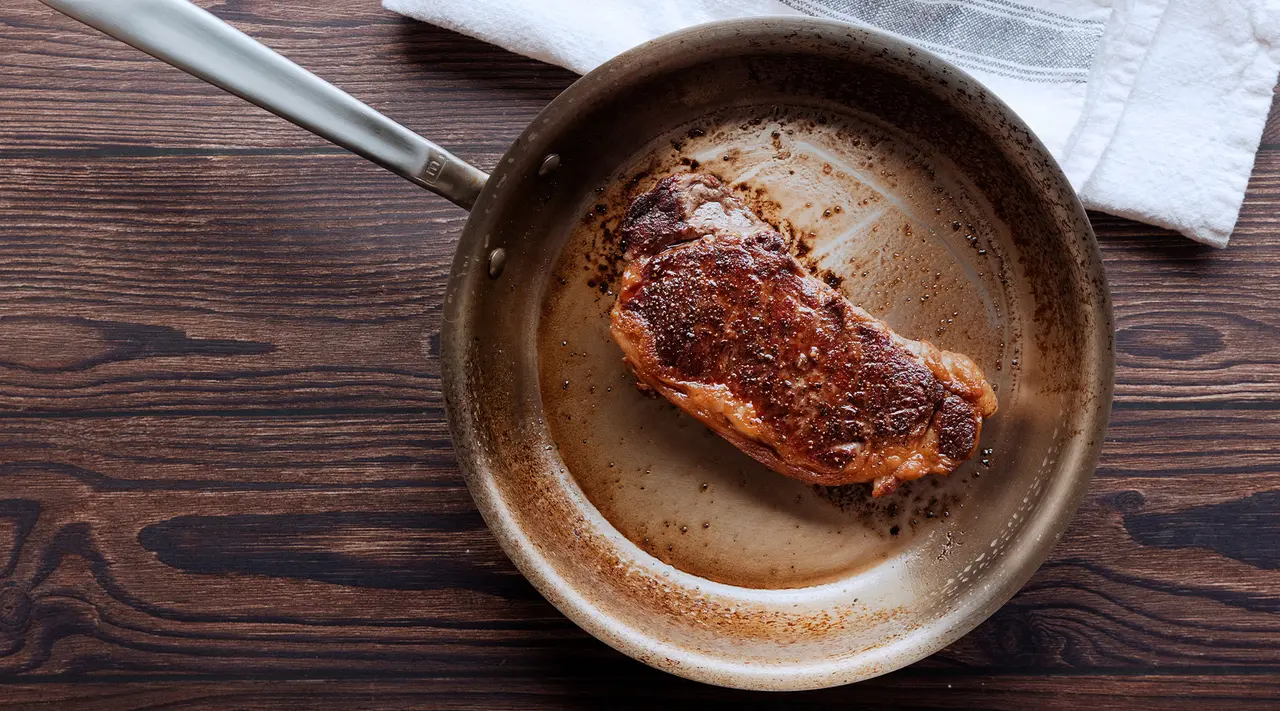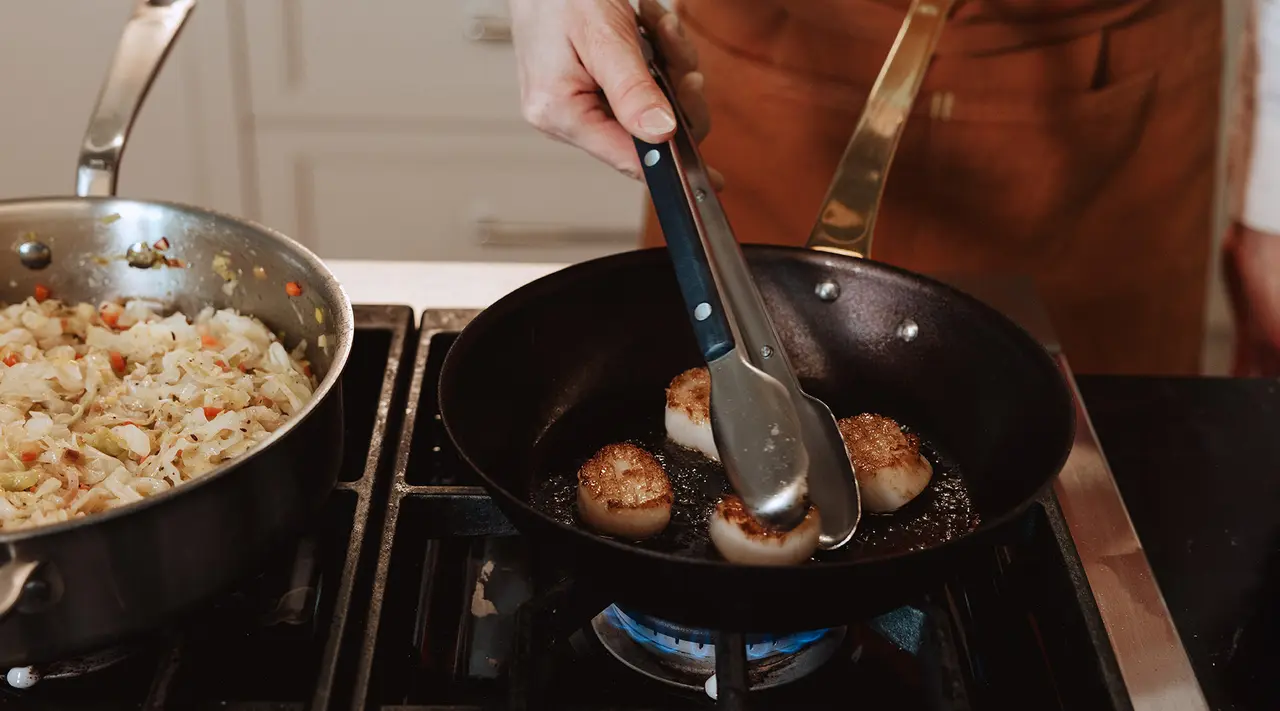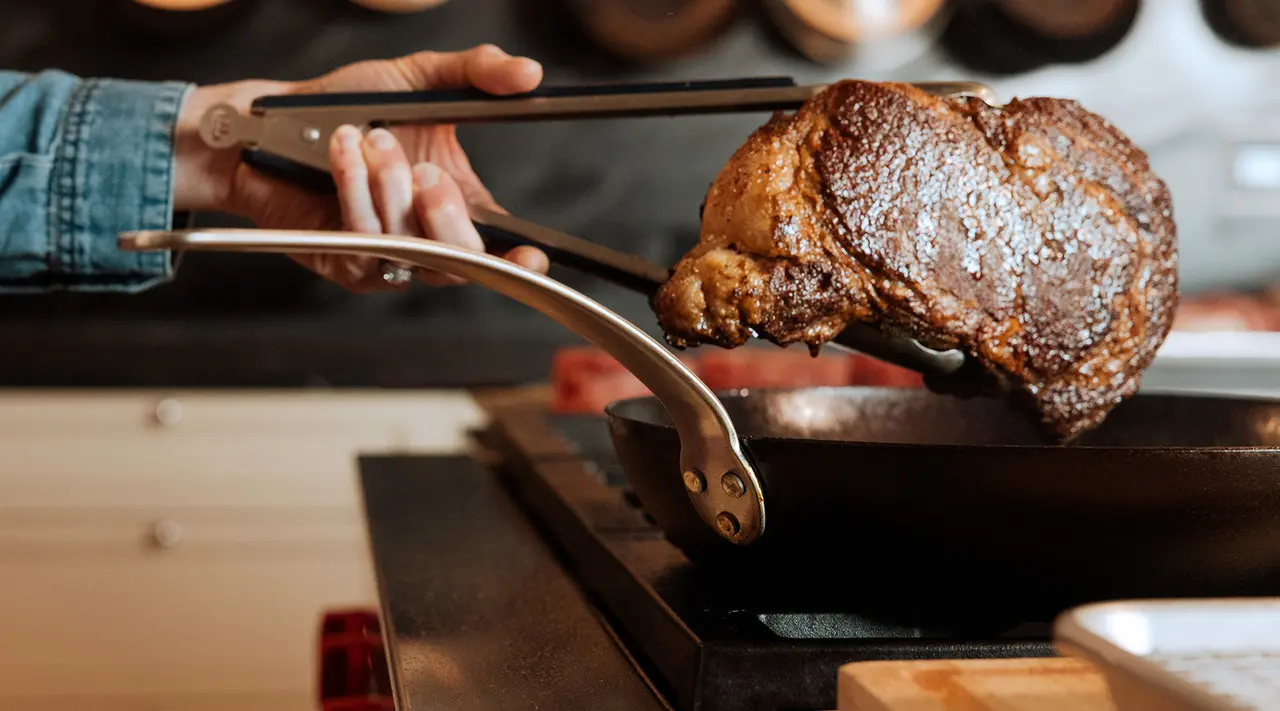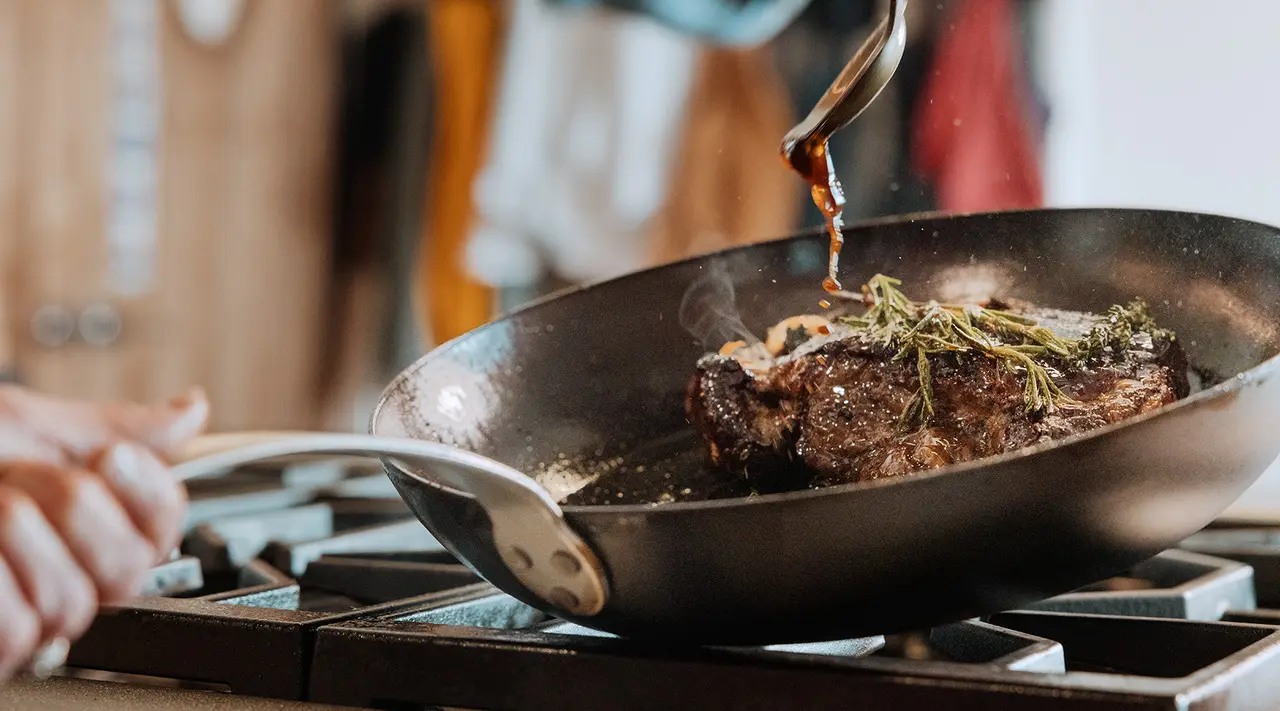Searing is a fairly simple technique for cooking food that—when done correctly—results in complex, deeply savory flavor and a range of satisfying textures. Of course, technique is a crucial part of getting a good sear on your meat, vegetables, and other favorite sear-able foods.
Yet even perfect technique can be undermined by a poor choice of cooking vessel. Today, we’re talking all about the best pan for searing: from carbon steel to cast iron, here are some of our top picks for searing success, every time.
What Makes a Pan Ideal for Searing?

First: why exactly is it so important to choose the right pan? Can’t you just use a non stick or ceramic frying pan to sear?
Technically, yes—but we don’t recommend it. Ceramic or conventional non stick pans simply aren’t designed for high heat cooking, something that is literally essential for searing. Even if you’re using a high-quality ceramic pan like our CeramiClad Frying Pan, you shouldn’t be cranking the heat above medium for more than a couple of minutes, maximum. Since it typically takes longer than this to get a decent sear on foods like steak or chicken breast, these pans are less than ideal.
Here’s what other qualities to look for to all but guarantee a perfect sear.
- Heat Retention: You can’t sear without high heat—simple as that. The corollary to this is that you need a pan with good heat retention, i.e. one that will stay ripping hot throughout the cooking process.
- Material: Following the above point, the best pans for searing are safe to use at very high temperatures, essential for searing.
- Flat, Even Surface: That old, warped pan you’ve held onto since Y2K may hold sentimental value, but it’s not a good choice for searing. A flat, even surface is crucial for even heat distribution and browning.
- Durability: Along with being high heat-resistant, the best pan for searing should also be durable—namely, able to hold up to the heavyweight ingredients and heat necessary for a successful sear.
Three Best Pans for Searing

Our preferred pans for searing—the ones that reliably produce that coveted Maillard brown crust and juicy, tender middle—are carbon steel; cast iron; and stainless steel. Just as suited to roasting, sauteing, and stir frying as they are to searing, these materials are highly versatile, making them more than worth the kitchen space. Here are few other features that earn them the top score in our books.
Carbon Steel
We often refer to our Carbon Steel Cookware as the lovechild of stainless steel and cast iron: lighter and more responsive than cast iron, yet with comparable heat retention, carbon steel is probably our number one choice for searing. It’s also naturally non stick once seasoned, making it a convenient option as well.
Enameled Cast Iron
Cast iron—either enameled or unfinished, but we're partial to enameled—is another excellent option for searing with one small caveat. While it’s super durable, high heat-resistant, and naturally non stick, cast iron is also the heaviest of these three options, making it more cumbersome to lift and maneuver. This is less of an issue when it comes to searing (you shouldn’t be moving the pan around too much anyway), though it’s still something to consider.
Stainless Steel
Our Stainless Clad is roughly neck-and-neck with carbon steel when it comes to searing capabilities, offering similarly great heat retention and distribution. While it doesn’t offer the same natural non stick properties as carbon steel, it does have a slightly shorter learning curve and requires less maintenance—perfect for anyone who doesn’t want to deal with seasoning or reseasoning their pan.
How to Sear Perfectly

If you’re just now getting your head around searing, here are some quick tips to get you started.
- Always preheat your pan. Unless you’re cooking a very fatty protein like bacon or pork belly, preheating your pan with cooking fat—typically until your oil is shimmering—is crucial to getting a proper sear. If you’re using stainless steel, preheating is even more important, since it reduces the chance of your food sticking (and thus causing a mess).
- If you’re searing thicker pieces of protein, such as steaks or chicken breasts, you’ll want to finish your dish in the oven. This allows you to control the doneness and/or temperature gradient of your food without burning the outside.
- If using a carbon steel or cast iron pan, make sure your pan has been adequately seasoned before you use it. This prevents the crust from sticking to the pan as it develops, potentially ruining your sear.
Mistakes to Avoid When Searing
Now that you know what to do when searing your steaks or chops, here’s what to avoid.
Mistake #1: Not letting the pan get hot enough
Don’t shy away from cranking up the heat. A low or medium-low flame isn’t enough to trigger the Maillard reaction (the process behind browning and caramelization), which deprives you of the rich, deep golden-brown crust you’re after.
Mistake #2: Overcrowding the pan
One of the reasons that recipes specify searing or sauteing food in batches is that this promotes the dissipation of moisture, leading to more consistent browning on each piece of food. An overcrowded pan, on the other hand, prevents liquid from evaporating, effectively steaming your food instead of searing it.
Mistake #3: Using the wrong kind of oil
Always make sure to use a neutral-tasting oil with a high smoke point, such as canola or refined avocado oil. Delicate flavored oils like sesame or walnut will burn more easily (and thus impart a burnt flavor into your food—the last thing you want when you’ve spent a whole coaxing a perfectly formed crust).
Ready to Cook?
Mouth watering? Perfect timing: we’ve got plenty of recipes for you to test out your new searing skills with, from restaurant-quality steaks to tender scallops. And don’t forget to snag the perfect pan: our Carbon Steel, Stainless Clad, and Enameled Cast Iron Frying Pans make searing—not to mention roasting, frying, and sautèeing—a virtual no-brainer.


























